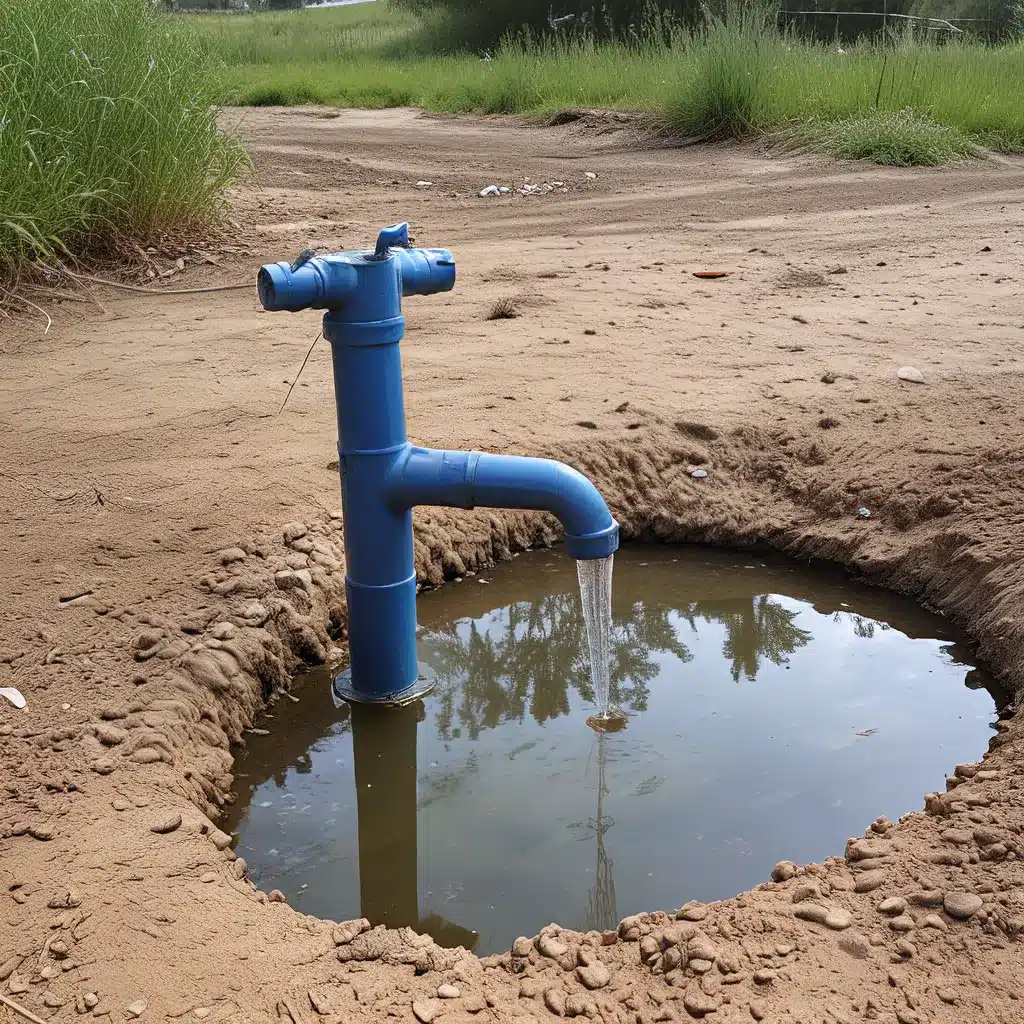
The Unseen Dangers Lurking in Our Water
Have you ever stopped to consider the true cost of groundwater contamination? I’ll admit, it’s not the most exciting topic – until you realize just how much is at stake. As someone who cares deeply about the environment and the health of our communities, this is a subject that has been weighing heavily on my mind.
Let me paint you a picture. Imagine a picturesque countryside, rolling hills, and lush green fields. Seems idyllic, right? Well, beneath that serene surface could be a ticking time bomb – toxins and pollutants seeping into the groundwater, slowly but surely contaminating the very lifeblood of the land.
It’s an issue that hits close to home for me. Growing up, I spent countless summer days exploring the woods and streams near my family’s farm. Little did I know, those waters could have been harboring hidden dangers. Groundwater contamination is an insidious problem, one that often goes unnoticed until the damage is already done.
The Unseen Threat: Understanding Groundwater Contamination
So, what exactly is groundwater contamination, and why should we be concerned? In simple terms, it’s the presence of harmful substances in the water that lies beneath the Earth’s surface. These contaminants can come from a variety of sources – industrial waste, agricultural runoff, leaking septic systems, and even improper disposal of household chemicals.
Studies have shown that the agriculture sector, responsible for growing, processing, and distributing our food, can be a major contributor to groundwater woes. The use of fertilizers, pesticides, and manure from large-scale livestock operations can all seep into the groundwater, compromising the quality and safety of this precious resource.
But it’s not just the environment that suffers. Groundwater contamination can have far-reaching consequences for human health as well. Exposure to contaminants like nitrates, lead, and arsenic can lead to a host of problems, from gastrointestinal issues to neurological damage, and even cancer.
And the kicker? These hidden costs often fly under the radar, with the full impact only becoming clear years or even decades down the line. It’s a problem that extends far beyond the farm, affecting entire communities and ecosystems.
The Silent Epidemic: The True Cost of Groundwater Contamination
Now, you might be thinking, “Okay, this is all very concerning, but how bad can it really be?” Well, my friend, brace yourself, because the numbers are staggering.
According to the United Nations Food and Agriculture Organization (FAO), the hidden costs associated with our current agrifood systems, which include groundwater contamination, are estimated to be a staggering $12 trillion per year. That’s more than the entire global food industry’s annual revenue!
And the human toll? Well, the FAO report estimates that these hidden costs contribute to the loss of over 11 million lives each year. That’s the equivalent of the entire population of my hometown, wiped out. It’s a sobering statistic that highlights the true magnitude of this crisis.
But the impact doesn’t stop there. Groundwater contamination can also lead to significant economic losses, as communities struggle to treat their water, replace polluted wells, and mitigate the fallout on agriculture and industries that rely on clean water. The hidden costs can include everything from reduced productivity to skyrocketing healthcare expenses.
It’s a vicious cycle that affects us all, whether we realize it or not. And the worst part? This is likely just the tip of the iceberg. As our global population continues to grow and our demand for food and resources intensifies, the pressure on our groundwater systems will only increase.
Turning the Tide: Strategies for Tackling Groundwater Contamination
So, what can we do to address this looming crisis? Well, the good news is that there are a number of strategies and technologies that hold promise for tackling groundwater contamination.
For starters, we need to rethink our approach to agriculture and industrial practices. Sustainable farming methods, like precision nutrient management and improved manure storage and treatment, can greatly reduce the amount of pollutants seeping into our groundwater. And advancements in wastewater treatment technology can help industries and municipalities better manage their liquid waste.
But it’s not just about the big players. Each of us has a role to play in protecting our groundwater resources. Proper disposal of household chemicals, responsible use of fertilizers and pesticides, and even simple water conservation measures can all make a difference.
And let’s not forget the power of education and advocacy. By raising awareness and pushing for stronger regulations and enforcement, we can hold our leaders and decision-makers accountable. After all, clean water is a fundamental human right, and we can’t afford to let it slip through the cracks.
A Call to Action: Safeguarding Our Water, Safeguarding Our Future
As I reflect on the challenges we face, I can’t help but feel a sense of both urgency and hope. Groundwater contamination may be a silent crisis, but it’s one that we can’t afford to ignore. The health of our communities, the vitality of our ecosystems, and the very future of our planet depend on our ability to tackle this issue head-on.
So, I implore you, dear reader, to join me in this fight. Visit Inland Waters Inc. to learn more about the steps you can take to protect our groundwater. Together, we can uncover the hidden costs and build a future where clean, safe water is a given, not a luxury.
The time for action is now. Let’s roll up our sleeves and get to work, for the sake of our loved ones, our communities, and the generations to come. The fate of our groundwater – and our world – hangs in the balance.


